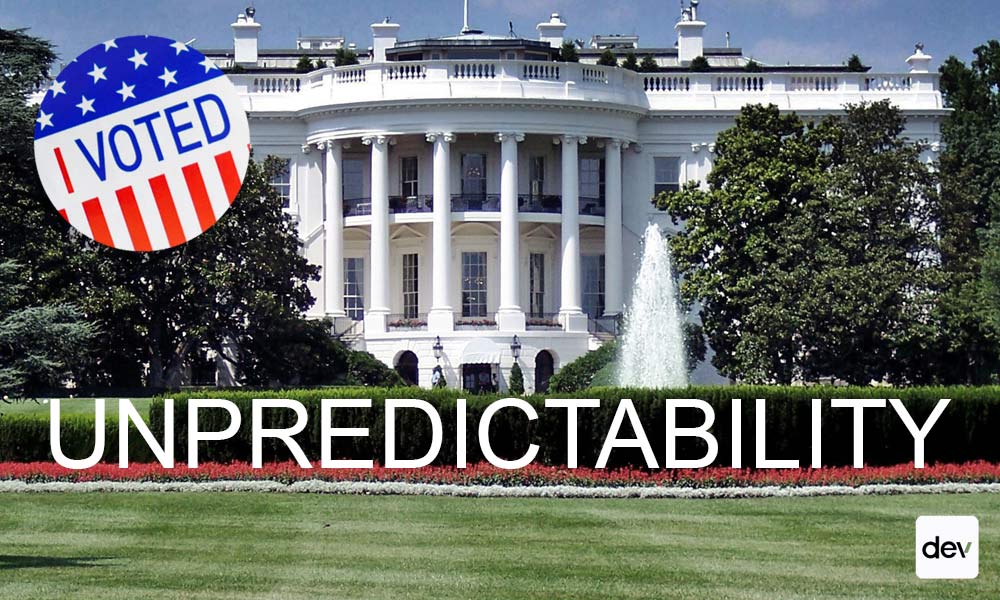
Finance
Presidential Elections and Their Effect on Real Estate Development
Discover how presidential elections influence real estate development, market trends, and investment strategies. Understand political impact on property growth.
Election years always bring about uncertainty about… well, everything. Real estate development is no exception as investors try to gauge their new operating environment and all the risks, challenges, and opportunities that might come with it. More often than not, they adopt a cautious “wait-and-see” approach in the months leading up to an election. But with enough analysis, these uncertain times can open the doors for strategic moves.
Historical Context & Election Cycles
Leading up to the 2016 election, housing starts fell by about 10% compared to the same months in the previous year — a classic marker of uncertainty when political change is afoot. But, in rare instances, the threat of rising interest rates or tighter lending conditions can compel developers to secure financing before elections happen.
Leading up to the 2020 election, for example, there was a 20% increase in lending applications compared to the same period in 2019. Of course, with the pandemic, there was much more at play in 2020 than in years prior. As the world suddenly shifted to remote work, much of the workforce started moving out of urban centers, kicking off a suburban and rural development boom. Housing starts increased substantially throughout the year, reaching 1.67 million by December, a 5.8% increase from 2019. Even still, the 2020 election brought up many concerns, particularly for commercial real estate developers.
Contrasting 2020 visions:
| Option 1 | Option 2 |
| Expand tax cuts | Clean energy investment |
| Reopen the economy | Investment in green technology |
| Infrastructure – roads, bridges, highways | Increase corporate taxes |
While the 2020 presidential election included vastly different visions from candidates and parties, with the exception of reopening of the economy related to the pandemic, many visions remained similar in the following election of 2024. For developers, staying ahead of big changes like these means investing in detailed analysis so they can effectively plan their next moves.


What Are Investors Uncertain About Leading Up To Elections?
Propositions can run the gamut from affordable housing mandates to zoning reform initiatives, and either administration could have a major impact on the trajectory of real estate development.
With one party, opportunities could arise in the form of incentives and tax breaks for sustainable development. However, stricter environmental regulations could increase compliance costs and affect timelines. On the flip side, deregulation could lower development costs and speed up project approvals — but would de-incentivize long-term sustainability initiatives.
Interest Rates, Inflation, and Mortgage Impacts
One key area developers look at is how the next administration stands to influence monetary policy. For instance, from 2023 into 2024, the Fed maintained interest rates at a range of 5.25% to 5.5% (the highest in over 15 years) to combat inflation. But higher interest rates increase the cost of borrowing, impeding new projects and limiting profitability. As a result, commercial real estate (CRE) lending slowed dramatically, and continuously depressed CRE property values could send the sector toward a crisis.


Developers also keep a close eye on trade policy before a big election. The price of key imported materials, like steel and lumber, is heavily influenced by tariffs and international trade agreements. In 2021, for example, lumber prices surged to over $1,500 per 1,000 board feet, more than triple their pre-pandemic levels, due to supply chain disruptions and trade policies. On both sides, the trade agenda can be muddled, complicating development planning.
Meanwhile, if a new administration mandates wage increases or expands worker benefits, labor costs could rise sharply, further tightening margins for real estate investors. These far-reaching budgetary implications could cause developers to avoid starting new projects and hasten the completion of those already in progress.
Tax Reforms & Policies
Looking at the bigger picture, investors also watch how changes to corporate taxes, property taxes, and capital gains taxes could affect their bottom line. If new tax incentives or infrastructure investments are promised, developers could see opportunities to accelerate projects in key sectors. On the other hand, an increased tax burden will cause developers to reconsider the scale and timing of their investments.
For the 2024 election, the 2017 Tax Cuts and Jobs Act became a major discussion point as many of its tax breaks were designed to expire in 2025. By capping state and local tax (SALT) deductions at $10,000, the Act majorly impacted developers in high-tax states like New York and California while favoring those in low-tax states. Election year analysis in situations like this allows developers to plan their moves based on if they think the Act will be allowed to expire, extended as-is, or adjusted to remove the caps.
Developers also consider what the current administration might be looking to do in the final months of their term, especially if they aren’t re-elected. For instance, when the Biden administration proposed increasing the corporate tax rate from 21% to 28%, large-scale developers realized doing so would majorly impact their bottom line. While this change would help fund infrastructure projects, it would also slow down development by increasing operating costs.
Demand Across Sectors
Given the many different proposals put on the table at every election, development plans often experience a major shift depending on who takes office. For instance, increased funding for programs such as the Low-Income Housing Tax Credit drives demand for affordable housing starts, with developers benefiting from tax credits and subsidies.
Meanwhile, emphasis on infrastructure investment and urban renewal indirectly benefits commercial real estate development, especially in metropolitan areas where federal dollars go toward revitalizing cities, expanding public transportation, and increasing broadband access. Additionally, federal investments in affordable housing could spur mixed-use developments where residential and commercial spaces are integrated.
By considering both sides and the outcomes of many different scenarios, developers are able to keep moving forward cautiously and intentionally.
Opportunities & Future Incentives
While election years consistently bring uncertainty, they also give developers the chance to slow down, assess, and strategically position themselves to benefit from post-election conditions.
Whether or not changes align with expectations, strategies like scenario planning and contingency planning allow developers to weather the inevitable risks and challenges that come with elections — and seize opportunities as they arise.



